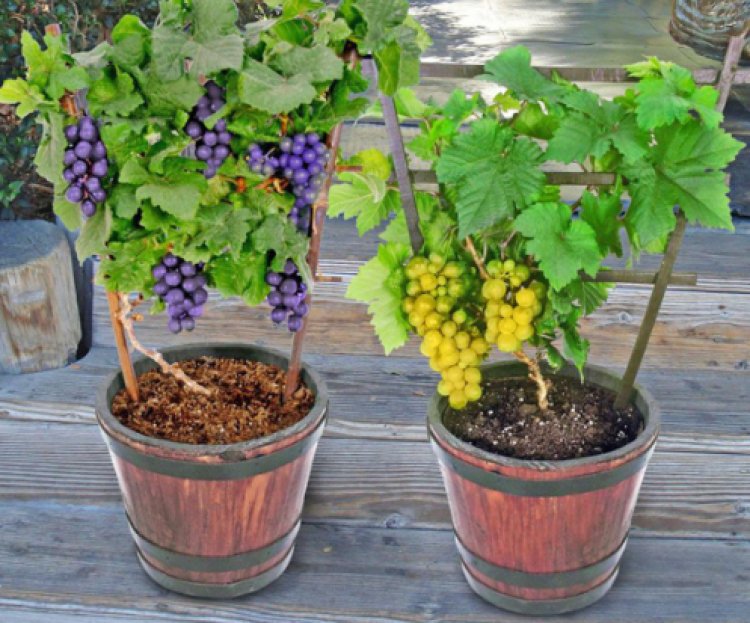How to Grow a Grapevine In Containers
Have you ever desired to own a grapevine but were limited with space and you did not know how to do it, here are simple steps to maintain a healthy and fruitful grapevine in a container;
Grapevines may be grown in containers and are an excellent way to enjoy grapes even if you don't have a huge garden. Before you start growing grapes in containers, you should learn a few basics about container gardening so you can keep everything organized.
The grape is a climber because it is a stem-tendril climbing plant that grows upwards with robust overhanging growth. You must keep this in mind in order to observe the blossoming plant; otherwise, it will grow wildly and out of control, which is something you do not want to happen.
Why grow grapevines in containers
Grapevines are hardy perennial plants that can withstand a brief period of drought and thrive in poor soil. They can be trained to take up very little space and hence grow well in containers, which is an interesting fact.
Choosing the grapevine
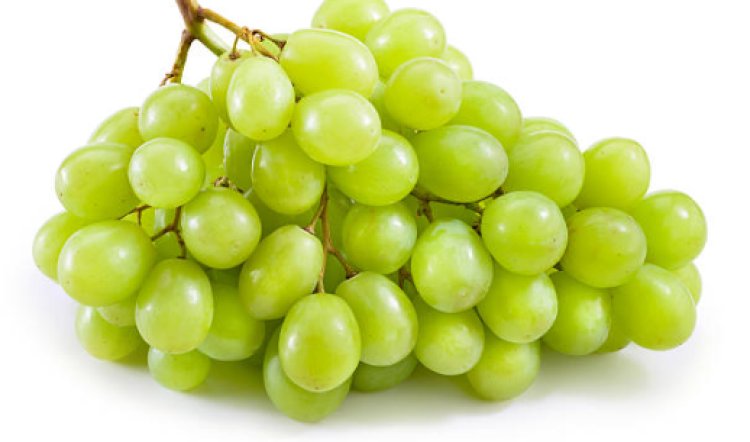
When it comes to choosing grapevines to cultivate, there are literally hundreds of kinds to pick from. Some grapevines are suited to specific climates, so choose one that is suited to your area to give your plant the best chance of survival and growth.
You can go to a garden center or a local nursery and ask for a variety that meets your description and required attributes after you know exactly what you want to do with your grapevine and how you want to use the grapes it produces. Alternatively, you can conduct an online search to find the finest selection for your requirements.
What you need to grow grapevines in a container
To cultivate grapevines in a container, you will need:
Chosen container: The first thing you'll need is a pot or other suitable container.
Quality soil: To correctly plant the vine, you'll need a decent layer of drainage for the container as well as some nice, rich black soil, as grapes require good soil to thrive. Grapes can be grown in almost any soil, but they prefer moist silt loam.
Mulch: Add a layer of mulch to keep weeds at bay while also keeping the temperature of the pot in check. Put stones or Styrofoam in the bottom of your container for drainage, then add soil and a layer of mulch. They do not require much fertilizer, but if you choose to feed them, use a fertilizer low in nitrogen.
Support Stalk: In order to grow grapevines in containers, you will need a sturdy support stalk. They can be made out of any material or shape you like, as long as it's robust and long-lasting. Your grapevine will have to support a lot of weight as it grows.
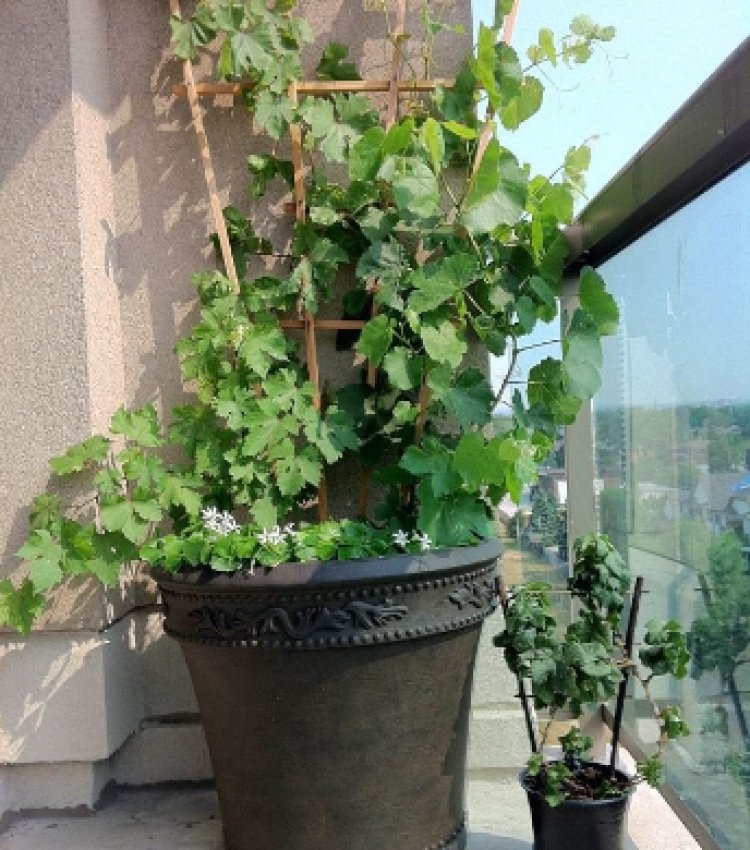
Pruning your grapevine
The vine produces a lot of new growth as it develops strong roots and becomes established in the container. As a result, you should begin pruning the grapevine. Making a diagonal cut away from the bud, just a little over the same, is the ideal method to do it. You can also cut right through the middle of the cane's joints. This procedure can be very effective, but you must take care not to harm the bud.
The purpose of pruning is to remove all but the two lower, healthy buds from your plant. The buds resemble a tiny pimple that has sprung from the bark. The new branches will sprout from these buds.
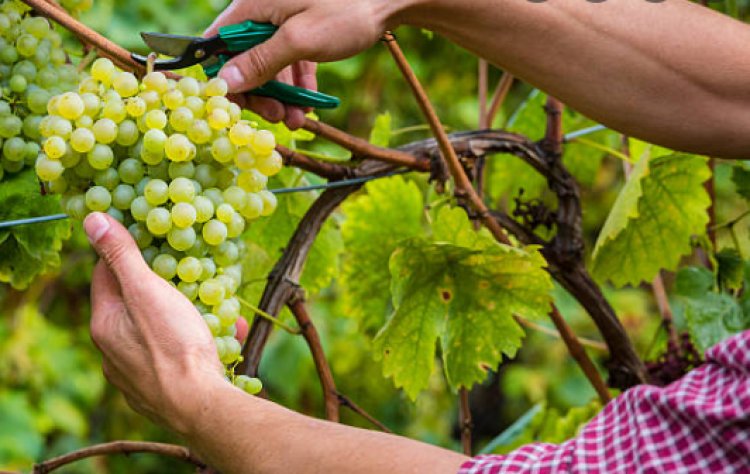
Training your grapevine
After you've pruned your grapevine, you'll need to train it to grow in a specific direction. You will have to shape the new branches into the shape you wish as they grow.
As your vine grows, you can attach it to the trellis/support stalks in stages. It will keep its shape as a result of this. Make sure to keep an eye on your vine because it might grow quickly.
Because you're growing your vine in a container, only one or two branches should grow. You can add a couple more if the container is large enough. The strongest branches will need to be kept. Runners that emerge from the central canes should be pruned away. Pruning will give the main vines more strength.
Tips for growing container grapevine
- During the fruiting season, keep an eye on your plant and cut away any weak flower buds so that it may spend all of its energy on the best blossoms, which will produce the best fruit.
- You should look for a suitable location to plant your grapevine. It's important to choose a location that gets plenty of sun because it helps the grapevine to produce more grapes.
- Make sure to trim any weak grapevines that have grown in each cluster. Every flower bud has several grapes, so if you remove the smallest, the others will benefit and develop more.
- Grapes don't require much care to thrive, but it's a good idea to fertilize them in the spring to encourage the growth of new canes. You can also feed them during the fruiting season to encourage them to produce more delicious grapes.
- When planting, make careful to separate the roots so that the grapevine can stretch out its roots. This will make it easier for it to establish roots and settle into its new habitat.
- You may need to construct some form of bird barrier so that birds do not eat all of your grapes. A little, shiny material hanging on the trees helps keep the birds away. You can also safeguard your vines with a net.
- You can try different forms and patterns while training the vines in the container. Because the new vines are so adaptable and easy to work with, you can train them in a variety of ways.
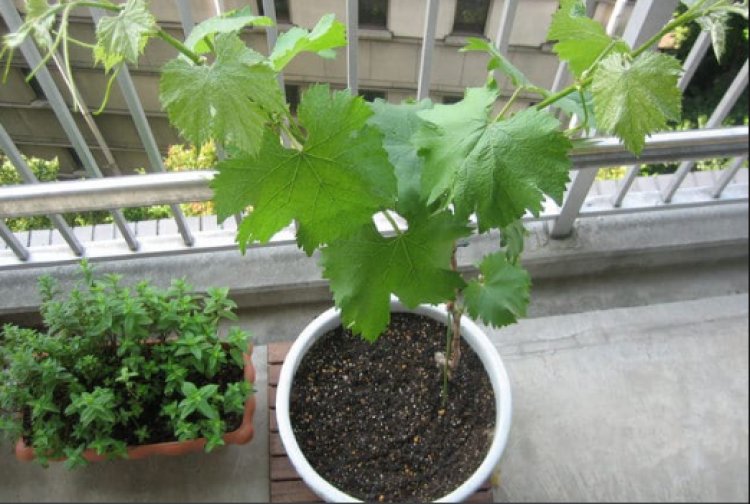
Conclusion
If you opt to plant the grapes in a container, you won't need much space. Grapevines take a long time to bear delicious grapes. Patience and proper grapevine maintenance will finally pay off. Grapevines can be used as a natural sun-blocking barrier or as an additional roof in a pergola.

